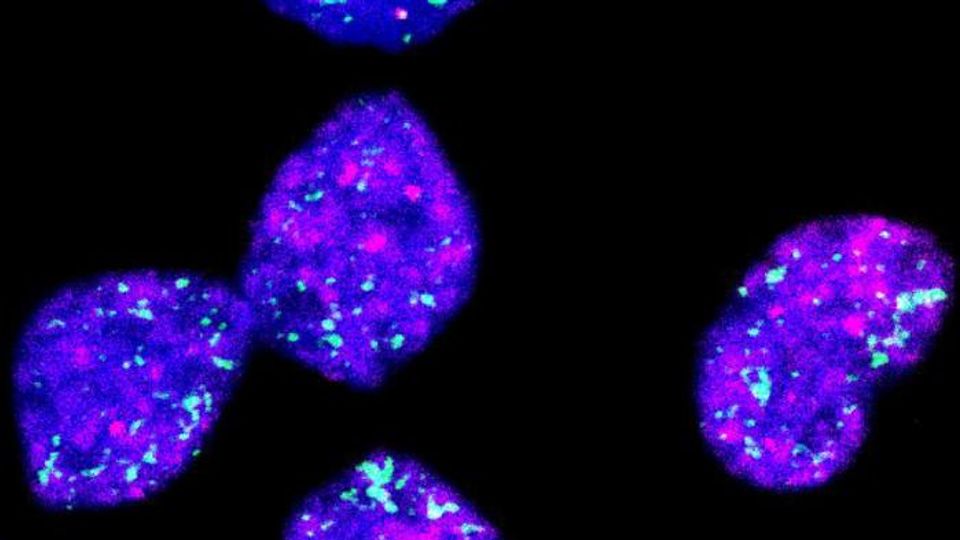Dormant Tumor Cells Found To Fuel Neuroblastoma Relapse
MYCN’s location outside chromosomes may drive relapse in aggressive neuroblastoma, offering a new therapeutic target.

Complete the form below to unlock access to ALL audio articles.
A team from the Experimental and Clinical Research Center (ECRC) – a joint institution of Charité – Universitätsmedizin Berlin and the Max Delbrück Center – has identified a mechanism that may explain why some aggressive neuroblastomas resist therapy. The study, published in Cancer Discovery, shows that the location of the oncogene MYCN within tumor cells influences both disease progression and treatment response.
Oncogene
A gene that can promote cancer development when mutated or overexpressed. Oncogenes can influence cell growth, division, and survival.Neuroblastoma is a pediatric cancer arising from cells of the sympathetic nervous system, most often affecting children under five. In some cases, tumors regress without treatment, but in others they grow quickly. Tumors with high numbers of MYCN copies typically respond to chemotherapy initially, but often return within one to two years.
Neuroblastoma
A type of cancer that develops from immature nerve cells, often in the adrenal glands or nerve tissue along the spine.Extra-chromosomal DNA and tumor dormancy
The researchers found that when MYCN is located outside chromosomes on small ring-shaped DNA structures, some cancer cells enter a dormant state that makes them resistant to chemotherapy. Unlike chromosomal DNA, this extra-chromosomal DNA is distributed randomly when cells divide, resulting in a mixed tumor cell population – some with many MYCN copies and others with few.
Extra-chromosomal DNA
DNA located outside the main chromosomes within a cell. In cancer cells, it can carry oncogenes and contribute to tumor growth and genetic diversity.Cells with high MYCN copy numbers tend to be aggressive and are destroyed by chemotherapy. Cells with fewer copies survive in a senescent-like state, potentially reactivating later and causing relapse.
Senescence
A state in which cells stop dividing but remain metabolically active. Senescent cells can contribute to aging and cancer relapse.A combined treatment approach
Using tumor cell cultures, mouse models and patient samples, the team demonstrated that combining chemotherapy with a drug that targets senescent cells improved treatment outcomes in mice with MYCN-driven tumors. This approach selectively removed both fast-growing and dormant tumor cells.
“We wanted to find out exactly what the gene does in cancer cells, how it might influence the expression of other genes and how tumors can be destroyed more effectively in the future.”
Dr. Jan Dörr.
The strategy is likely to benefit cancers in which oncogenes are located on extra-chromosomal DNA, rather than within chromosomes. The researchers suggest that similar methods could be explored for other tumor types, including certain brain cancers.
Next research steps
Future work will focus on identifying additional compounds that can selectively target dormant tumor cells while sparing healthy tissue. The study involved collaborators from Germany, the United Kingdom, and China, highlighting the role of international partnerships in advancing pediatric cancer research.
Reference: Montuori G, Tu F, Qin D, et al. Extrachromosomal DNA-driven oncogene dosage heterogeneity promotes rapid adaptation to therapy in MYCN-amplified cancers. Can Dis. 2025:OF1-OF24. doi: 10.1158/2159-8290.CD-24-1738
This article has been republished from the following materials. Note: material may have been edited for length and content. For further information, please contact the cited source. Our press release publishing policy can be accessed here.
This content includes text that has been generated with the assistance of AI. Technology Networks' AI policy can be found here.


